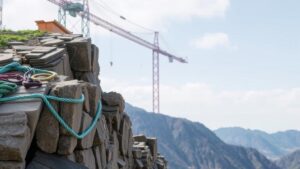Techniques for Recovering Artifacts in Overlooked Outdoor Marketplaces
Techniques for Recovering Artifacts in Overlooked Outdoor Marketplaces
Outdoor marketplaces serve as rich repositories for historical artifacts, yet they are often overlooked in archaeological surveys. These bustling environments reflect local cultures, artisan skills, and trade practices. This article will explore various techniques for recovering artifacts in such marketplaces, providing a roadmap for effective archaeological engagement.
Understanding the Importance of Outdoor Marketplaces
Outdoor marketplaces have historically been vibrant centers of trade and cultural exchange. offer insights into daily life, commerce, and societal structures. For example, the Grand Bazaar in Istanbul, Turkey, has existed for centuries as a crucial trading hub, showcasing a variety of goods from numerous cultures. By examining artifacts from such locations, researchers gain a deeper understanding of socio-economic patterns and the cultural significance of artisanal products.
Initial Assessment and Site Selection
Before artifact recovery can take place, conducting an initial assessment of potential marketplaces is critical. This process includes identifying locations that show historical significance or have been wrongly classified as modern developments.
- Historical Research: Conduct background research using local historical texts, maps, and records. For example, analyzing archived newspapers can provide context about previous market activities.
- Community Engagement: Engage with local historians and community members who may possess knowledge of the sites significance. Their insights can help pinpoint areas likely to yield artifacts.
Mapping and Surveillance Techniques
Once a marketplace is identified, precise mapping and surveillance techniques are essential for effective artifact recovery. Restructuring the physical layout of the marketplace can provide clues to potential artifact locations.
- Geographical Information Systems (GIS): GIS can be used to create detailed maps of the site, allowing researchers to analyze spatial relationships and identify areas with the highest potential for discoveries. For example, GIS mapping has been instrumental in identifying trade routes and their impact on artifact distribution.
- Ground Penetrating Radar (GPR): A non-invasive technique, GPR allows for subsurface scanning without disrupting the marketplace activities. It can reveal buried structures and potential artifact concentrations. A notable case is the GPR application at the now-excavated site of Pompeii.
Field Techniques for Artifact Recovery
When it comes to the actual recovery of artifacts, employing effective field techniques is vital. Knowledge of these methods enhances the likelihood of successful finds while minimizing disruption to trade activities.
- Systematic Surface Collection: This involves a controlled process of walking the site in a grid pattern and collecting visible artifacts. Documenting the location and context of each item is crucial for further analysis.
- Excavation Pits: If the market allows for minor excavation, strategically placed pits can be dug to recover artifacts buried beneath the surface. This method should be used judiciously to avoid disturbing ongoing market activities.
Documentation and Preservation of Artifacts
Recovering artifacts is only part of the process; meticulous documentation and preservation ensure the information gleaned is not lost. Documenting each item’s location, context, and condition allows for a comprehensive analysis post-recovery.
- Cataloguing: As artifacts are recovered, they should be catalogued in a database that tracks detailed information about each piece. This could be implemented through software like collections management systems used in museums.
- Conservation Methods: Apply appropriate conservation techniques based on the material of the artifacts, whether they are ceramics, metals, or organic materials. For example, ceramics may require cleaning and stabilization, while metals often need anti-corrosion treatments.
Real-World Case Studies
Several case studies highlight the effectiveness of these techniques in recovering artifacts from overlooked outdoor marketplaces.
- The Flea Markets of Paris: Archaeologists in Paris have utilized surface collection and community collaboration to uncover a wealth of artifacts from the rich history of Parisian trade. This includes everything from ceramics to jewelry that date back to different historical periods.
- Marketplaces in Morocco: In Marrakesh, researchers employed GPR techniques in local bazaars to locate subterranean structures that linked to ancient trade routes. The findings led to further archaeological excavations that uncovered items revealing the influence of trade on cultural exchanges.
Challenges and Ethical Considerations
Despite the potential rewards, several challenges arise when recovering artifacts in outdoor marketplaces. It is essential to navigate these while maintaining ethical standards.
- Local Regulations: Always respect local laws governing archaeological practices. Engaging with governmental bodies for permits is crucial.
- Community Impact: Artifacts often have significant local value. Engaging the community and considering their perspectives can lead to a more inclusive recovery process.
Conclusion and Actionable Takeaways
Recovering artifacts from overlooked outdoor marketplaces requires a thoughtful combination of techniques, community engagement, and ethical considerations. Utilizing historical research, advanced mapping technologies, and proper field techniques can yield significant findings that contribute to our understanding of cultural history.
Researchers and enthusiasts alike can apply these methodologies by:
- Conducting thorough preliminary research and engaging with local communities.
- Using technology such as GIS and GPR to enhance artifact recovery strategies.
- Documenting and preserving artifacts responsibly to ensure their stories are told.
By employing these strategies, we can unlock the hidden narratives of our marketplaces, providing vital connections to our past.

